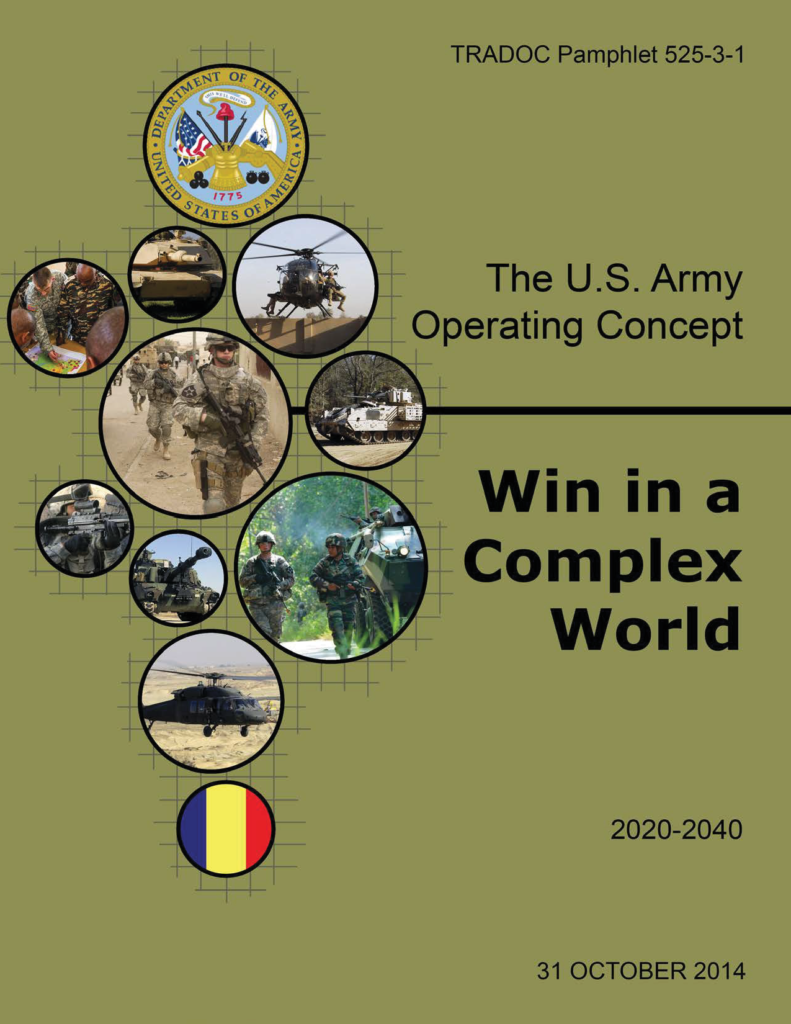 Last week, I touched on the ongoing effort by the U.S. Army to assess the nature of Russian advances in military technology and how they might affect the nature of combat on future battlefields. In a previous post, I highlighted that the Army’s preliminary conclusions about changes in near-future ground combat were being challenged by the other armed services in the context of debates over the next fiscal year U.S. military budget.
Last week, I touched on the ongoing effort by the U.S. Army to assess the nature of Russian advances in military technology and how they might affect the nature of combat on future battlefields. In a previous post, I highlighted that the Army’s preliminary conclusions about changes in near-future ground combat were being challenged by the other armed services in the context of debates over the next fiscal year U.S. military budget.
According to recently-confirmed Secretary of the Army, Eric Fanning, in order to persuade its critics, the Army needs to a better job of explaining the role it plays. “What I would have to do first of all is… tell the Army story… and the reason to do that is to make sure that the Army is properly resourced.”
Nadia Schadlow, a senior program officer at the Smith Richardson Foundation, pushed back against the idea that the Army needs a better narrative. She contends that the Army has already developed a theory of warfare that spells out how it believes near and medium-term wars will be fought and that it is now up to the critics to explain what aspects of this theory they object to and why.
Schadlow sketched out the U.S. Army’s current theory of warfare as it has been explained by senior Army leaders and in doctrinal publications.
The Army view is that conflicts in the future, like those in the past, will ultimately be resolved on land. Army forces will be essential components of joint operations to create sustainable political outcomes while defeating enemies and adversaries who challenge U.S. advantages in all domains: land, air, maritime, space, and cyberspace. Army contributions to joint operations provide multiple options to civilian and military leaders. These capabilities include tailorable and scalable combinations of special operations and conventional forces, regionally aligned and globally responsive combined arms teams, and foundational theater capabilities to enable joint operations.
The notion of a military service defining its own theory of warfare—as opposed to adopting a general theory of warfare—is an interesting one. [Schadlow drew the paragraph above from TRADOC Pamphlet 525-3-1 The U.S. Army Operating Concept 2020-2040: Win in a Complex World (2014)] Schadlow referenced a recent article by U.S. Army Major Robert Chamberlain that assessed the German Army’s theory of warfare in the context of its military defeat at Verdun in 1916. Chamberlain defines a theory of warfare as
[A] description of how a military intends to produce strategic outcomes. In making a decision to apply a military remedy to a strategic problem, one employs a theory of warfare to determine how and if the proposed solution will work. In the modern world, the development of grand strategy often receives theories of warfare as a given. Due to the time and expense required to develop and train a modern military, the strategic decision-makers are bound by the military capabilities and doctrine that exist when they assume power.
He spelled out what a theory of warfare does for a military organization.
A theory of warfare provides the ordering principles of a military whether made explicit or not. It is a description of the strategic environment, of what the military is, and how it applies itself against an adversary. Everything else that a military does—how it dresses, organizes itself, procures equipment, imposes discipline, generates force, sees terrain, treats captured enemies, deals with civilians, and so forth—is largely a function of how it defines and achieves success in war.
Chamberlain’s definition for a theory of warfare is idiosyncratic and he does not make reference to the very large body of existing scholarship on warfare theory. It sounds a good deal more like an operating concept rather than a general theory of warfare. Schadlow’s definition is also problematic in that it seems like a self-referential description of how the U.S. conceptualizes the contemporary operating environment and the tasks the Army carries out as part of the overall joint force responsibilities. She twice cites the Army’s contention that future conflicts will be ultimately decided on land, but does not explain why. An Army theory of warfare would be more compelling if it also explained warfare in the other domains, not just on the ground.
Nevertheless, theories and theorizing are useful exercises in critical thinking. Even if Chamberlain’s concept does not rise to the level of a theory of warfare, it does show that effort is being made within the U.S. military to break down these ideas into their constituent parts and rethink how they work together. This is a subject I plan to return to in the near future.



